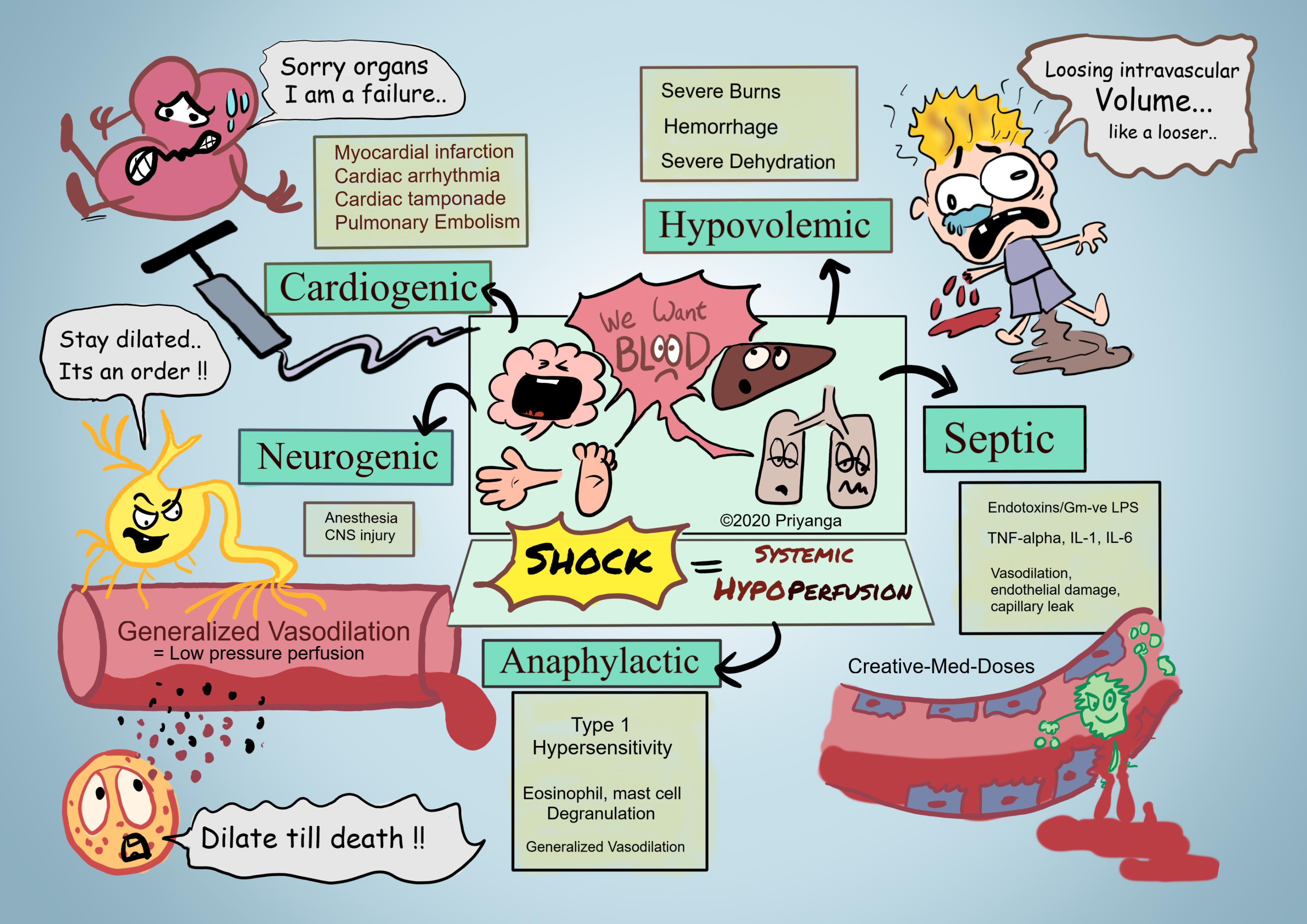Shock: Systemic hypoperfusion
Shock is characterized by diminished cardiac output or reduced effective circulating blood volume which impairs tissue perfusion. This systemic hypoperfusion of various organs leads to cellular hypoxia and multiorgan failure.
Causes
Cardiogenic shock
It results from the low cardiac output as a result of myocardial pump failure.
It can be caused by -
- myocardial damage (infarction)
- ventricular arrhythmias
- extrinsic compression (cardiac tamponade)
- outflow obstruction (e.g., pulmonary embolism)
Hypovolemic shock
It results from low cardiac output due to loss of blood or plasma volume.
- hemorrhage
- fluid loss from severe burns
- a fluid loss in severe dehydration
Neurogenic shock
The presence of generalized vasodilation due to generalized anesthesia or CNS injury leads to low-pressure perfusion.
Anaphylactic shock
It is due to type I hypersensitivity reaction where eosinophils and mast cells degranulate and cytokines causes generalized vasodilation and systemic hypoperfusion.
Septic shock
It is triggered by microbial infections and is often associated with severe systemic inflammatory response syndrome (SIRS).
The common pathogenic mechanism is a massive outpouring of inflammatory mediators from innate and adaptive immune cells that produce arterial vasodilation, vascular leakage, and venous blood pooling.
These cardiovascular abnormalities result in tissue hypoperfusion, cellular hypoxia, and metabolic derangements. It leads to organ dysfunction and, if severe and persistent, organ failure and death.
Stages of Shock
Shock is a progressive disorder that leads to death if the underlying problems are not corrected.
There are three stages of shock progression -
Stage I: the compensatory stage
It is an initial nonprogressive stage. The compensatory mechanisms are activated, and vital organ perfusion is maintained. The peripheral circulation is compromised, and the patient has cold and clammy extremities.
Stage II: the decompensation stage
A progressive stage is characterized by tissue hypoperfusion and the onset of worsening circulatory and metabolic derangement. It includes acidosis, electrolyte disturbances, and renal insufficiency.
Stage III: the irreversible stage
An irreversible stage in which cellular and tissue injury is irreversible and multiorgan failure is seen.
It is a fatal condition, and even removal or underlying cause and correction of hemodynamic disturbance will not save the patient.
....

....
Revision for today Xeroderma Pigmentosum: The moon child - Creative Med Doses
Buy books here 😍💕 Books - Creative Med Doses